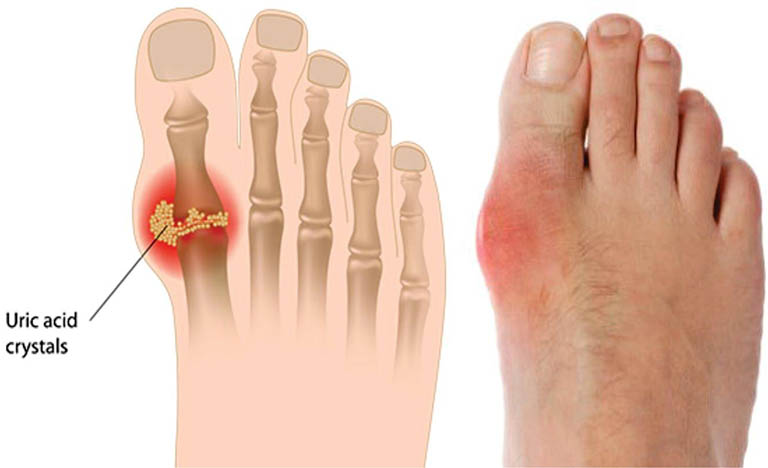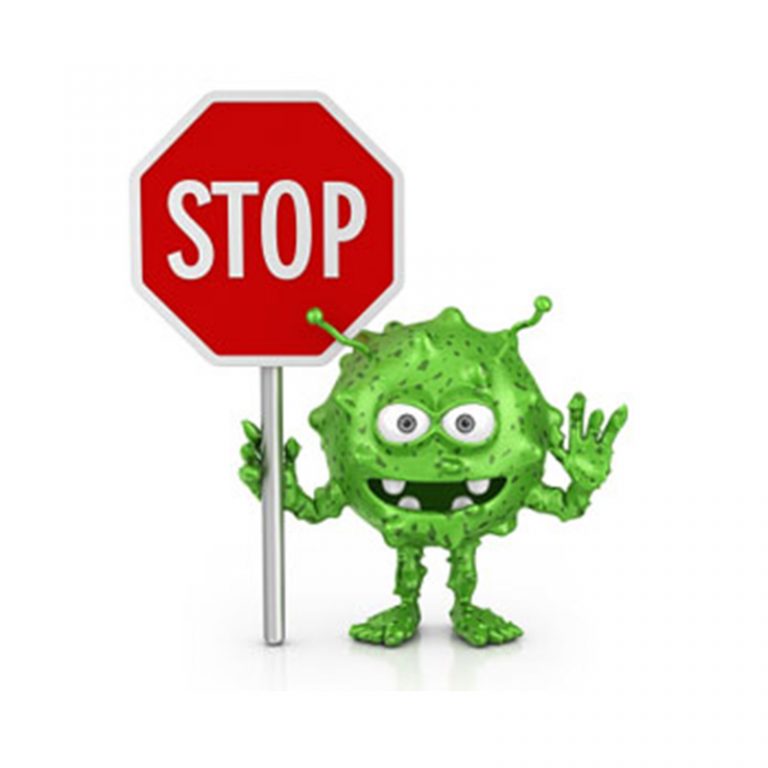
Vatarakta: The Real Cause of Gout
The Real Cause of Gout and How to Lower High Uric Acid with Ayurveda
A gout is a form of inflammatory arthritis. Its main symptoms include burning pain, redness, tenderness, localised heat and swelling, and swollen joints, particularly in the big toe joint area. However, sometimes, there are no symptoms at all. If you don’t treat this condition in time, it may over time result in chronic ulceration, high blood pressure, kidney stones or kidney damage.

Gout is, in all cases, a result of elevated uric acid within the bloodstream. It will occur when urate crystals accumulate in the joints, causing it to swell and produce painful attacks.
In Ayurvedic terms, gout is due to Vatarakta, a Vata-provoked disease affecting the blood tissue. This disorder is also the result of an aggravated Pitta dosha, which is known as the culprit of chronic inflammation.
But what causes gout and Vatarakta? And how does gout exactly develop and present itself symptomatically?
The Stages of Gout Development
Gout will not appear overnight. In fact, it will present itself in various stages over the years until it becomes a full-blown disease or leads to further complications.
The stages of gout, when symptoms are in fact present, are:
- A generalised feeling of unwellness. This may or may not be noticeable. Feeling fatigued or suffering from brain fog and digestive issues are also common at this stage. Joints might also feel stiff or tender (commonly affected joints include the ankles, knees, elbows, wrists and fingers).
- Localised, mild to moderate painin the big toe joint. This may be accompanied by a bearable heat sensation, swelling, redness and discomfort that comes and goes in waves. Other joints in the body may also be affected (see stage 1). Many people will wrongly ignore these minor symptoms as they are often short-lived.
- Sudden, intense burning and swelling redness in the big toe joint (gout attack). This is when the inflammation is severe and the gout has fully developed. Symptoms will be brought on in sudden painful attacks. Fever may also be present. Medical advice must be sought after at this stage, if not during stages 1 or2.
- Ulceration. This will occur if the inflammation persists and is left untreated. Walking may be challenging and painful, and you might struggle to find suitable footwear.
- High blood pressure. This is the final stage of gout’s lifecycle. Further diseases may then develop due to the high blood pressure.
It is important to note that even doctors struggle at times to diagnose gout. This is common when there are little to no clinical symptoms present and uric acid levels are not perceived as being particularly high. It is therefore pivotal to keep persisting with tests and seek out advice from various medical professionals if you feel unwell. Sometimes, your health instinct alone can save your life!
So, what can be done if you have such symptoms? According to Ayurveda, your dosha must be examined first.
Diagnosing Vatarakta: The Real Cause of Gout
According to Ayurveda’s dosha concept, Vatarakta presents itself in the body due to two aggravated doshas:
- Vata, which in excess dehydrates the nerves, joints, and progressively the entire system.
- Pitta, which raises the body’s temperature and leads to inflammation and digestive problems.
Every person’s constitution translates to a certain dosha But all three of the dosha elements also exist within all body types at varying ratios. This is what an Ayurvedic practitioner will first need to assess prior to diagnosing Vatarakta or gout.
There are, however, many tell-tale signs of a gout sufferer or at least an individual that is more prone to developing gout and arthritic inflammation. That said, you may be more prone to Vatarakta if:
- You are of the Vata constitution
- You are male
- You are over the age of 40
- You are underweight, overweight, or have a metabolic disorder
- Your immune system is otherwise compromised (chronic illness, chemotherapy, etc)
- You chronically take medication
- You are on your feet most of the day or chronically stress your joints
- You have a family history of arthritis or gout
- You have certain deficiencies and/or poor dieting habits
- You are a vegetarian or vegan
- You have recently had surgery or experienced trauma
Once diagnosed with Vatarakta, your Ayurvedic practitioner will be able to devise a personalised treatment plan just for you.
The Ayurvedic Treatment Plan for Gout
Managing and treating gout or Vatarakta through holistic means can be beneficial on multiple levels. You can reap the benefits of not only a drugless, customised, all-natural treatment plan but you can also rejuvenate your entire system process.
The Ayurvedic treatment plan is unique to each individual, but will in most cases be carried out as follows:
Step #1: Balancing of Vata and Pitta doshas through diet
Because bad eating habits may be the culprit behind your aggravated doshas, a customised dietary plan will be given to you initially. While the addition of certain foods to your diet can be recommended from the get-go (like asparagus to filter the blood) only a qualified Ayurvedic practitioner is knowledgeable enough to advise on how to pacify one dosha without aggravating another.
In the case of gout, you will also have to avoid certain gout-aggravating foods, like broad beans, kidney beans, citruses, pork, red meat, lamb, seafood, onion, garlic, as well as certain fruits and spices. Cooler foods and dishes can also assist with lowering inflammation and heat/fire (Pitta) within the body, however overdoing it can lead to aggravating other doshas.
Step #2: Prescription of Ayurvedic herbal medicine
Your own customised herbal medicine will be decocted for you by your Ayurvedic practitioner with the purpose of stimulating the organs to function properly, purifying the blood, and balancing the doshas.
The most commonly used herbs for gout are Ashwagandha, Amalaki, Brahmi, and Shatavari but you should always consult an Ayurvedic practitioner for the safest and most suitable dosage options.
Step #3: Yoga recommendations

Yoga can be prescribed as a complementary form of therapy to nourish and encourage your joints to heal. Yoga accomplishes this by increasing blood flow throughout the body, encouraging oxygenation and tissue repair, while also stimulating organ function – which can speed up your overall gout recovery.
Recommended Yoga asanas (postures) in the case of gout include the Cobra pose, Locust pose, Raised Leg Pose and the Shoulder Stand.
Conclusion
Gout is a troublesome and difficult-to-diagnose condition that can make your life a painful misery. Early diagnosis is key to getting it managed in time and sparing you from the severe pain and complications that may present themselves later on in life. And while receiving the initial diagnosis is important, how you decide to treat and manage your gout symptoms is, ultimately, up to you.
At the Yatan Holistic Ayurvedic Centre in Sydney, we can help you manage and overcome gout through an all-natural and highly safe gout treatment plan made just for you. It is not a quick fix, but you can expect lasting results.
______________________
Are you looking for an all-natural way to get rid of gout and joint pain? Contact us today for a phone consultation or book an appointment online.
Disclaimer: This article is not intended to substitute medical advice. All information and resources referenced, including medicinal preparations, fitness, dietary and lifestyle recommendations, are based on the opinion of the author. Please consult a medical practitioner if you require advice or are experiencing any worrisome symptoms.



